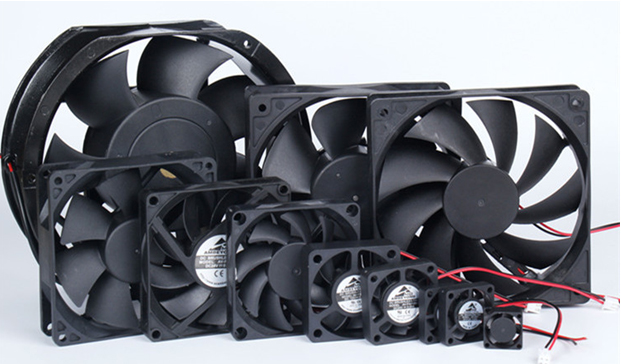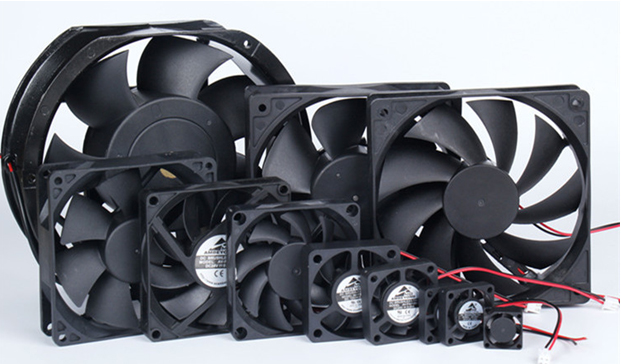
An overview of Cooling Fans
Cooling fans are also known as panel fans, they are an ideal solution for application that requires high efficiency and silent operation. The cooling fans work by sucking the cold air at the bottom vent, and thereby realizing hot air from the top vent as the heat rises upward.
Application of a Cooling Fan
Application of cooling fans or panel fans includes condensing units, processes and general ventilation, foundry ventilation, warehouse ventilation, factory ventilation, and many more.
In case of cooling application – A cooling fan is generally switched on when the temperature rises and to reduce the temperature, the thermostat in a cooling fan would be wired generally in an open position.
In the case of heating application – A cooling fan is generally switched on when the temperature lowers down to a certain point and to increase the temperature, the thermostat in a cooling fan would be wired generally in a closed position.
Here, the enclosure thermostat works with a heating or cooling device to maintain a safe working temperature within the enclosure for safeguarding against condensation, humidity, and frost. They can be wired as normally opened or closed, following the application. The enclosure thermostat in general not connected to the PLC, but sometimes it could be displayed as an enclosure internal temperature alarm. In this scenario, the enclosure thermostat is connected directly with the cooling fan on doors and switches independently of the PLC.
Related Post: The Cooling Process Of An Electrical Cooling Panel For Ease Of Work
Advantages of a Cooling Fan
Cooling fans bring on various advantages with them. Below we have listed down some of their crucial advantages:
- => Cooling fans are cost-effective.
- => They are compact and therefore take up less space.
- => No CFCs.
- => Cooling fans are easily installable.
- => They stabilize enclosure temperature and humidity.
- =>They require low maintenance costs.
- => Cooling fans mount in a standard electrical knockout.
- => Prevents heat damage and nuisance tripping.
- => A cooling fan eliminates specks of dust and filters.
- => They prevent dust and dirt contamination by keeping a positive pressure with the enclosure.
- => These fans are applicable to all environmental conditions, which include temperatures as high as 200-degree F.
Related Post: How You Should Choose A Cooling Fan
These are some of the major advantages of a cooling fan.
Types of cooling fans
JIGO the leading manufacturer of panel cooling fans in India offers you various categories and types of cooling fans. Below are the listed categories and details of cooling fans offer by JIGO:
JG-8025:
Categories:
- JG-DC-8025:
- => Voltage – 12 and 24
- => Current – 18 and 0.08
- => Power – 16 and 1.92
- => Air volume – 60 and 38.60
- JG-AC-8025:
- => Voltage – 110 and 220
- => Current – 13/0.11 and 0.09/0.08
- => Power – 12/11 and 14/13
- => Air volume – 15/18 and 15/18
JG-9025:
Categories:
- JG-DC-9025:
- => Voltage – 12 and 24
- => Current – 20 and 0.12
- => Power – 40 and 2.88
- => Air volume –00 and 45.00
- JG-AC-9025:
- => Voltage – 220
- => Current –08/0.07
- => Power – 16/15
- => Air volume – 28/34
JG-12038:
Categories:
- JG-DC-12038:
- => Voltage – 12, 24, and 48
- => Current – 34, 0.20, and 0.18
- => Power – 08, 4.80, and 8.64
- => Air volume – 90, 85, and 90
- JG-AC-12038:
- => Voltage – 110, 220, and 220
- => Current –24/0.23, 0.14/0.13, and 0.14/0.13
- => Power – 22/12
- => Air volume – 90/100
JG-172172:
Categories:
- JG-AC-172172:
- => Voltage – 110, and 220
- => Current –65/0.63 and 0.30/0.29
- => Power – 55/54
- => Air volume – 150
- JG-AC-172172BB 220
- => Voltage – 220
- => Current –30/0.29
- => Power – 55/54
- => Air volume – 150
JG-172150:
Categories:
- JG-DC-172150:
- => Voltage – 24
- => Current –65
- => Power –60
- => Air volume – 160
- JG-AC-172150:
- => Voltage – 110, and 220
- => Current –47/0.46 and 0.23/0.22
- => Power – 37/35 and 35/33
- => Air volume – 150/170
- JG-AC-172150BB
- => Voltage – 220
- => Current –23/0.22
- => Power – 35/33
- => Air volume – 150/170
These are the wide ranges of cooling fans provided by JIGO the leading manufacturer of panel cooling fans in India.
This blog presents a brief overview of cooling fans, which includes an overview of cooling fans, along with their application, advantages, and types, by JIGO one of the leading cooling fan manufacturers in India. For more information on the topic please contact us at https://jigoindia.com/ or mail us at hirawat@jigoindia.com.

